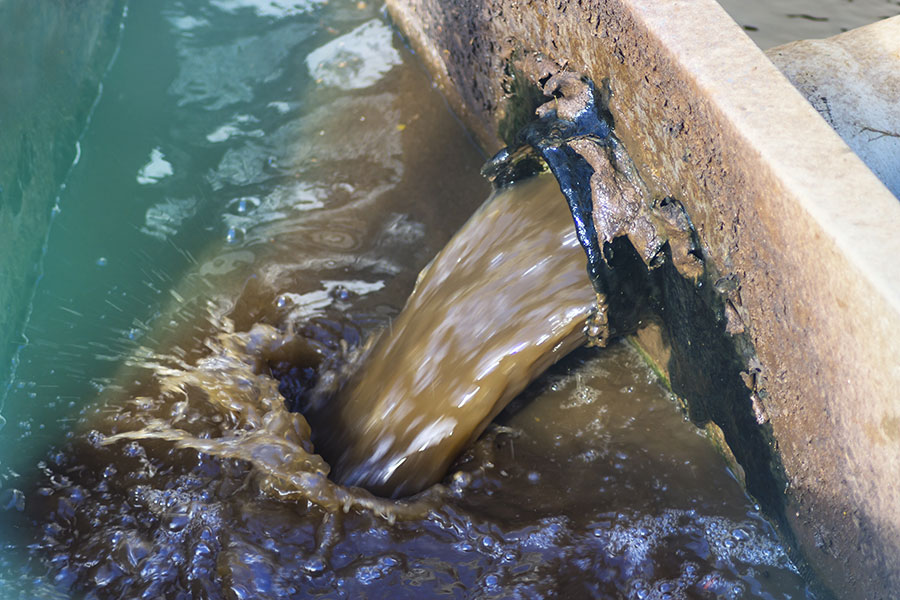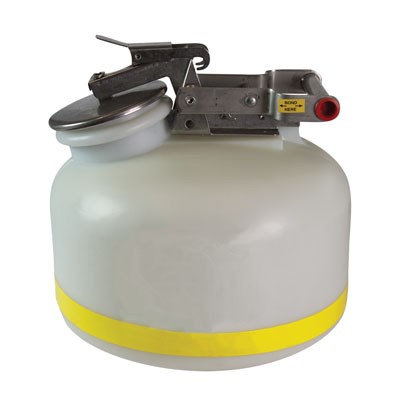Leading Industrial Wastewater Treatment Solutions: Making Certain Conformity and Efficiency
Leading Industrial Wastewater Treatment Solutions: Making Certain Conformity and Efficiency
Blog Article
How Fluid Waste Disposal Works: A Comprehensive Introduction of Strategies and Technologies Utilized

Introduction of Liquid Waste Types
The complexity of fluid waste kinds necessitates a detailed understanding of their features and implications for disposal. Fluid waste can broadly be classified right into numerous kinds, including industrial, municipal, farming, and contaminated materials. Each classification exhibits unique properties, needing specific management methods to reduce environmental and health and wellness threats.
Industrial fluid waste originates from producing procedures and usually has a variety of impurities, such as heavy steels, solvents, and natural substances. Community liquid waste, largely consisting of wastewater from houses and business establishments, contains natural matter, nutrients, and pathogens (industrial wastewater treatment). Agricultural liquid waste, including runoff from farms, might contain fertilizers, chemicals, and animal waste, positioning dangers to water high quality and environments
Harmful liquid waste is identified by its poisoning, sensitivity, or potential to trigger damage. This classification consists of compounds like acids, bases, and particular chemicals that demand rigid handling and disposal methods. Comprehending these varied fluid waste kinds is vital for creating reliable disposal methods and guaranteeing conformity with environmental laws. Appropriate category and characterization are essential for implementing proper therapy strategies and minimizing the adverse impacts on public health and wellness and the setting.
Physical Treatment Techniques

Screening is the initial step, where larger fragments and debris are gotten rid of from the liquid waste making use of displays or grates. In sedimentation storage tanks, heavier bits clear up at the base, forming a sludge layer, while the made clear liquid can be additional dealt with.
Purification is another necessary approach that entails passing the fluid through permeable materials, such as sand or membrane layers, to capture smaller particles. This step enhances the top quality of the fluid, making it suitable for succeeding therapy procedures.

Chemical Treatment Methods
Chemical therapy techniques are crucial for effectively taking care of liquid waste, especially in resolving liquified and colloidal impurities that physical techniques may not effectively eliminate. These methods utilize various chemical agents to reduce the effects of, speed up, or transform dangerous materials into much less dangerous types.
One typical method is coagulation and flocculation, where chemicals such as alum or ferric chloride are included to advertise the aggregation of put on hold bits. This process enhances sedimentation, enabling for much easier elimination of the resulting sludge. Furthermore, oxidation processes, using agents like chlorine or ozone, are used to damage down complex natural substances and microorganisms, making the waste safer for discharge or additional therapy.
Neutralization is one more vital method, which readjusts the pH of acidic or alkaline waste streams to neutral degrees, avoiding prospective harm to downstream systems and the environment. Additionally, advanced oxidation procedures (AOPs) use mixes of oxidants and ultraviolet light to degrade relentless pollutants, achieving a greater degree of therapy performance.
Biological Therapy Processes
Biological therapy procedures play an essential duty in the monitoring of fluid waste by utilizing bacteria to break down organic issue and decrease contaminant degrees. These procedures can be broadly classified into cardiovascular and anaerobic treatments, each using certain microbial neighborhoods to achieve effective waste deterioration.
Cardio treatment entails the use of oxygen to facilitate the breakdown of organic products by germs. This process is frequently applied in turned on sludge systems, where oygenation storage tanks give a favorable environment for microbial development, resulting in the oxidation of organic contaminants. The resultant biomass can be divided from dealt with effluent through sedimentation.
On the other hand, anaerobic therapy takes place in the absence of oxygen, depending on different web link germs to break down raw material. This method is specifically helpful for high-strength waste, as it creates biogas, a renewable energy resource, while minimizing sludge production. Technologies such as anaerobic digesters are regularly utilized in industrial and local applications.
Both anaerobic and aerobic biological treatments not just reduce the ecological effect of liquid waste yet additionally promote resource recovery, making them important elements of lasting waste monitoring approaches. Their flexibility, performance, and effectiveness support their extensive application throughout various fields.
Emerging Technologies in Disposal
Cutting-edge strategies to liquid waste disposal are rapidly progressing, driven by advancements in modern technology and an increasing emphasis on look at here now sustainability. Among these arising modern technologies, membrane layer bioreactors (MBRs) have actually gotten grip for their capacity to integrate biological therapy with membrane filtering, causing high-quality effluent that can be recycled in various applications. MBRs make it possible for smaller sized impacts and more effective procedures contrasted to standard systems.
An additional appealing advancement is the usage of anaerobic food digestion integrated with nutrient recovery innovations, which not only treats fluid waste yet likewise creates biogas and recovers valuable nutrients like nitrogen and phosphorus. This dual benefit improves source efficiency and lowers environmental impact.
In addition, advanced oxidation procedures (AOPs) are being embraced for the deterioration of complex natural toxins. These approaches use effective oxidants and stimulants to damage down impurities at the molecular level, using a highly efficient solution for difficult waste streams.
Moreover, the combination of expert system and equipment understanding in waste management systems is maximizing functional performance and predictive maintenance, resulting in reduced expenses and improved ecological conformity. These modern technologies show a significant change in the direction of even more sustainable and reliable fluid garbage disposal practices.
Verdict
Finally, reliable liquid waste disposal necessitates an extensive understanding of numerous techniques and innovations. The integration of physical, chemical, and organic treatment approaches makes sure the effective monitoring of diverse waste types. Additionally, the introduction of innovative innovations enhances therapy efficiency and promotes sustainability in waste administration techniques. By constantly progressing these methodologies, it comes to be possible to attend to the expanding challenges connected with liquid waste, eventually contributing to environmental management and source recovery.
Fluid waste disposal is a critical facet of ecological monitoring, needing an extensive understanding of different techniques More Help and innovations customized to different waste types. Fluid waste can broadly be categorized into several types, including commercial, metropolitan, farming, and harmful waste. Agricultural liquid waste, including drainage from ranches, may include fertilizers, pesticides, and pet waste, posturing risks to water high quality and communities.
Various physical therapy methods play an important duty in taking care of liquid waste efficiently - industrial wastewater treatment.In verdict, efficient liquid waste disposal necessitates a thorough understanding of numerous strategies and technologies
Report this page